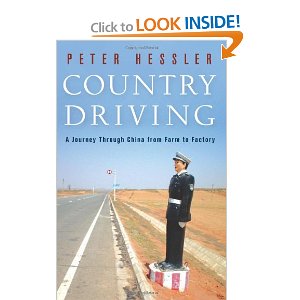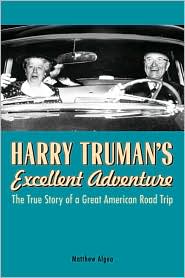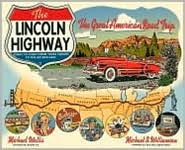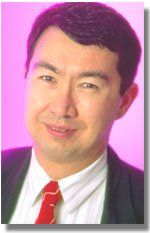[note]
Regular readers know I’m planning a major road trip this summer across 20 American states.
This month’s Book Lust features American travel-related books on the regions I’ll be passing through and a special contribution by the inimitable Paul Denlinger on a place I hope to one day visit: China.
[/note]
Country Driving
by Peter Hessler, reviewed by Paul Denlinger
Country Driving, like China, is one of those books which operates on several different levels all at the same time. For those who are not acquainted with China, it is light entertainment about the country’s rapid development, and some of the entertaining, even comic, results and side-effects of that development. For those who are more acquainted with the country, it offers a deeper look at the regional and cultural differences within this fascinating country, and how the country operates, even though the country is as different from region to region as the European continent.
During the period from 2001 – 2007, the author, who is a journalist and is fluent in Chinese, took three different road trips. So different and contrasting are they that he divides the book into three different parts: Book I called The Wall, Book II called The Village and Book III called The Factory. Book I’s title refers to the Great Wall, which he followed into the provinces of Shaanxi, Gansu and Xinjiang in China’s arid northwest. Book II refers to a village which he visited and stayed in not far from Beijing in distance, but lives in a completely different world culturally. Book III refers to factory life in southern Zhejiang province, which is now the most light-industrialized part of China, full of family-owned factories and businesses.
The author’s fluency in Chinese brings the reader much closer to the experience of the Chinese as the Chinese see themselves. For the most part, journalists in China are not fluent in Chinese, and rely on local assistants to translate for them. Until recently, these assistants were assigned to them by the Chinese government, and it was up to them to insure that the western journalists insured the right official perception of China. For Peter Hessler, these human filters don’t exist, giving the book a much more human feel.
This gives the reader the ability to see how the Chinese see their own modernization and put it in perspective. While they are materially much better off, with the income of the village going up more than 100% in six years, life is still tough. Even in a small village, there is still politics because they need to elect a village party secretary to run its own day to day affairs.
 In contrast to this, life in The Factory section is different. There is less government interference, and when it happens, it happens in a different way, mainly having to do with how rural land is turned into urban or industrial land. For those in business or from a business background, this is particularly interesting: it explains how money and wealth are created from land use. In much of the western press, this is dismissed as corruption, but Hessler subtly explains that there is much more to it than that. The Factory also does much to explain how whole families have moved from one province to another, attempting to establish new relationships along the way and make their way up the economic success ladder in today’s China. In short, it’s all about leverage, something which the Chinese have had a few thousand years to learn about. In the race for leverage, whole towns have chosen to find niches, just making buttons, belts or socks. The Factory refers to a factory which makes support wires for women’s brassieres, and how one enterprising engineer, copied one European machine, then made Chinese copies, just as Francis Cabot Lowell copied loom designs from the British in 19th century America. In another case, a whole village of young men became gold farmers, playing World of Warcraft for players in Germany, but then abandoning that for something else when the rules changed. In yet another story, Hessler interviews a woman painter who paints street scenes of Venice and life in rural Utah, even though she has never been outside China. Unlike painters in the west, she takes a very practical view of her work; she reveals that she doesn’t like painting, that most of her buyers have poor taste, but that it pays the bills and she is pleased with that.
In contrast to this, life in The Factory section is different. There is less government interference, and when it happens, it happens in a different way, mainly having to do with how rural land is turned into urban or industrial land. For those in business or from a business background, this is particularly interesting: it explains how money and wealth are created from land use. In much of the western press, this is dismissed as corruption, but Hessler subtly explains that there is much more to it than that. The Factory also does much to explain how whole families have moved from one province to another, attempting to establish new relationships along the way and make their way up the economic success ladder in today’s China. In short, it’s all about leverage, something which the Chinese have had a few thousand years to learn about. In the race for leverage, whole towns have chosen to find niches, just making buttons, belts or socks. The Factory refers to a factory which makes support wires for women’s brassieres, and how one enterprising engineer, copied one European machine, then made Chinese copies, just as Francis Cabot Lowell copied loom designs from the British in 19th century America. In another case, a whole village of young men became gold farmers, playing World of Warcraft for players in Germany, but then abandoning that for something else when the rules changed. In yet another story, Hessler interviews a woman painter who paints street scenes of Venice and life in rural Utah, even though she has never been outside China. Unlike painters in the west, she takes a very practical view of her work; she reveals that she doesn’t like painting, that most of her buyers have poor taste, but that it pays the bills and she is pleased with that.
For someone who is new to China, the book provides a gentle introduction and good entertainment. For those who are more acquainted with the country, it provides another look at a different part or parts of China, and reminds us that the country is so vast and different that it’s too much for any single individual to take in.
Paul Denlinger is an internet consultant based in Beijing and Hong Kong who writes for Forbes, his own blog, the China Vortex, and Asian Correspondent.
Harry Truman’s Excellent Adventure
by Matthew Algeo, reviewed by Christopher Buckley in The Washington Post:
 The title “Excellent Adventure” probably ought to be retired at this point, but not quite yet, for Matthew Algeo has given us just that: an extremely excellent adventure by ex-President Harry Truman and his wife, Bess, in the form of a road trip they both made — just the two of them — in the summer of 1953, not long after Harry had left the White House with a 22 percent approval rating. Twenty-two percent . . . why does that sound familiar? (Confidential memo to George W: Pack up that car with Laura and hit the road!)
The title “Excellent Adventure” probably ought to be retired at this point, but not quite yet, for Matthew Algeo has given us just that: an extremely excellent adventure by ex-President Harry Truman and his wife, Bess, in the form of a road trip they both made — just the two of them — in the summer of 1953, not long after Harry had left the White House with a 22 percent approval rating. Twenty-two percent . . . why does that sound familiar? (Confidential memo to George W: Pack up that car with Laura and hit the road!)
It’s hard not to read this utterly likable if occasionally overwrought book without feeling a tad nostalgic for the days when American automobiles set the gold standard, gas cost 27 cents a gallon, and the best restaurant in town might be found at the airport. It may make you feel a bit ironic, too, inasmuch as the impetus for the Truman escapade was a trip to Philadelphia, where the former president delivered a speech deploring Republican cuts to the defense budget.
At times, you feel as though you’ve wandered into an episode of “The Twilight Zone.” Harry Truman, perhaps the most down-to-earth man who ever led this country, returned home to Independence, Mo., in 1953, broke. His only source of income was his $111.96-per-month World War I pension. In those days, ex-presidents didn’t get pensions. But they might be offered a free car, and Harry happily accepted a spanking-new 1953 Chrysler (those were the days) New Yorker. The sticker price then was about $4,000, the average yearly salary of an American worker. It was offered gratis, but Truman insisted on paying something — and probably spent a whole dollar on it. A very presidential compromise.
Harry had always been a car man, and now he had the best. And so, broke, out of work, he did what any red-blooded American would do under similar circumstances: He hit the road and took along the missus to make sure he didn’t speed (a Truman tendency). And what an adventure they had. He got pulled over on the Pennsylvania Turnpike — despite Bess’s supervision — stayed in motels, ate in diners. Everyone delighted in seeing the former First Couple, never mind the 22 percent approval rating. The country just loved Harry. When they reached Washington, the accommodations improved (the Mayflower). In New York City, they stayed at the Waldorf=Astoria (note the equal sign, duly explained by the diligent Algeo), where Harry pointedly did not look up his old friend and erstwhile adversary, Herbert Hoover. Cole Porter was also living there at the time. One of the delights of the book is the incidental detail: Porter and Secretary of State Dean Acheson had been roommates at Harvard Law School. Who knew? There’s enough of that in here to make you a Trivial Pursuit god for a year. In Philadelphia, Harry spoke to retired military officers in the same hotel where, years later, Legionnaire’s Disease struck. Indeed, a weird hotel karma seemed to follow Harry and Bess: In Wheeling, W. Va., they stayed at the McClure House, the birthplace of McCarthyism. It was there that Tail Gunner Joe delivered the immortal line “I have here in my hand a list . . . .” A Decatur, Ill., motel where the Trumans lodged is now a correctional facility.
In Ohio, the couple passed near enough to Wright-Patterson Air Force Base for Algeo, a public radio reporter, to descant informatively and amusingly over the history of presidential airplanes. Harry was the first president to fly domestically, he reports. Franklin Roosevelt’s plane was nicknamed the Sacred Cow. Harry called his second plane the Independence. When he was flying over Ohio, home state of his nemesis, Republican Sen. Robert Taft, Harry would go aft to flush the lavatory in a symbolic gesture of non-partisanship. Presidential aircraft didn’t become Air Force One until Eisenhower’s time. Ike’s plane, the Columbine II, took its name from the flower of Mamie Eisenhower’s home state, Colorado. (It now sadly connotes something else.) Back then Ike’s plane was also known as Air Force 8610. One day, there was a bit of confusion in air traffic control over it and Eastern Airlines flight 8610, prompting a new protocol of clarity in nomenclature. All this is, to be sure, an America that no longer exists.
The thought of an ex-president jumping into a car with just his wife, no Secret Service, packing his own bags, pumping his own gas, drinking Cokes with grease monkeys is . . . well, it ain’t gonna happen, and we’re the poorer nation for that. Perhaps this is why our current president’s spontaneous evening strolls with his wife and their romantic dinners in Prague are so charming: They recall us to a time when we were sort of — gosh — normal. The annual pension of an ex-president today is about $190,000, plus expenses that can bring the tab as high as $2.5 million. Gerald Ford, bless his Republican heart, turned the ex-presidency into a branding opportunity, and, together, the Clintons earned $109 million from eight years of speeches and corporate appearances. All of which proves, one might say, that it is still a great country, but very different from the days of Harry and Bess and their 1953 Chrysler.
Lincoln Highway
by Michael Wallis, review by Publishers Weekly:
 One look at the retro artwork on the cover of this travel tome will tell you what’s in store for you—a visit down memory lane the length of the U.S. Following the 3,000-mile Lincoln Highway—much of it has been replaced or renamed—from New York City’s Times Square to San Francisco Bay, Wallis (Route 66: The Mother Road ) expertly captures the oft-forgotten and offbeat sights and tales of an America bypassed by superhighways. Most every town, restaurant, mom-and-pop store the author encounters along “The Main Street Across America” has seen better days, but Wallis still takes the time to celebrate their classic architecture and down-home recipes. With an eye for details and a gift for storytelling, he moves just as smoothly between the role of tour guide and yarn spinner as he does between the road’s history and its current incarnation. The juxtaposition between old and new is further underlined by the presentation of classic images and new photographs by Williamson. With a chapter dedicated to each of the 13 states that the highway passes through, this book will delight those looking to uncover their local roots as well as adventurers yearning for that American rite of passage—a cross-country road trip.
One look at the retro artwork on the cover of this travel tome will tell you what’s in store for you—a visit down memory lane the length of the U.S. Following the 3,000-mile Lincoln Highway—much of it has been replaced or renamed—from New York City’s Times Square to San Francisco Bay, Wallis (Route 66: The Mother Road ) expertly captures the oft-forgotten and offbeat sights and tales of an America bypassed by superhighways. Most every town, restaurant, mom-and-pop store the author encounters along “The Main Street Across America” has seen better days, but Wallis still takes the time to celebrate their classic architecture and down-home recipes. With an eye for details and a gift for storytelling, he moves just as smoothly between the role of tour guide and yarn spinner as he does between the road’s history and its current incarnation. The juxtaposition between old and new is further underlined by the presentation of classic images and new photographs by Williamson. With a chapter dedicated to each of the 13 states that the highway passes through, this book will delight those looking to uncover their local roots as well as adventurers yearning for that American rite of passage—a cross-country road trip.
Listen to an interview with the author and photographer.
The Cactus Eaters: How I Lost My Mind and Almost Found Myself on the Pacific Crest Trail
by Dan White, reviewed by Publishers Weekly
Traversing broiling deserts, snowy mountain passes and dank rain forests on its crooked way from Mexico to Canada, the Pacific Coast Trail is an epic challenge for die-hard backpackers. White and his girlfriend, Melissa, set out, late in the season and bereft of experience, to tread all 2,650 miles of it, leaving behind lousy reporting jobs and hoping to find self-definition and a deepened relationship. (They call their trek the Lois and Clark Expedition.) Hilarious greenhorn misadventures ensue—including the author’s ill-advised chomp, while dizzy with dehydration, into a reputedly moisture-laden prickly-pear cactus—that tested their survival skills and commitment as a couple. The trail becomes less an itinerary than a world unto itself, full of squalor, discomfort and majestic scenery, and peopled by charismatic misfits and an austere cult of ultra-light speed-hikers, as the couple rely on arcane camping gear and bizarre gummy-bear-and-marshmallow diets. The wilderness authenticity the author seeks proves elusive; all journey and no destination, the story itself eventually trails off with the hero even more callow and confused than when he started. Still, White’s vivid prose and hangdog humor make readers want to keep up.
